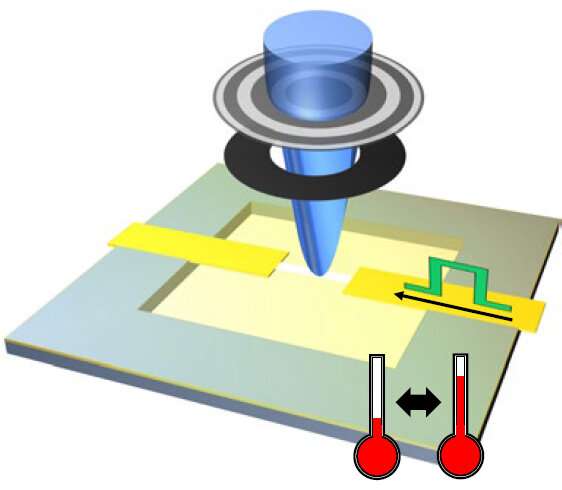Skyrmions like it hot: Spin structures are controllable even at high temperatures

A joint research project of Johannes Gutenberg University Mainz (JGU) and the Massachusetts Institute of Technology (MIT) that previously demonstrated the use of new spin structures for future magnetic storage devices has achieved yet another milestone. The international team is working on structures that could serve as magnetic shift registers, so-called racetrack memory devices. This type of storage promises low access times, high information density, and low energy consumption. The new insights published in Nature Electronics shed light on the effects of temperature on the dynamics of skyrmions. According to the researchers' findings, skyrmions move more efficiently at higher temperatures, and their trajectories only depend on the speed of the skyrmions. This makes device design significantly easier.
Skyrmions could serve as data bits for racetrack memory devices in the future
The teams at JGU and MIT observed billionfold reproducible motion of skyrmions, a new topologically stabilized spin structure that is a promising candidate to be used as data bits in the racetrack device. The latest experiments were carried out in thin films of magnetic material that stabilize skyrmions at and above room temperature, which is a feature that is required for any application. As it turned out, there currently are limits to the speed of a skyrmion caused by its deformations that will need to be overcome, possibly in antiferromagnetic materials.
"This is a great moment, as we have worked for a long time to get this study completed. Now that we know that skyrmions can be moved a billion-fold and at high temperatures that are typical for the insides of a computer, we can focus on tackling the high-speed regime and get the device from its experimental state to being superior to existing storage technology," said Dr. Kai Litzius, lead author of the article. Litzius conducted this work at Johannes Gutenberg University Mainz, combined with a research stay at MIT. After finishing his Ph.D., he moved to the United States to work at MIT as a postdoctoral associate.
Professor Mathias Kläui, corresponding author of the paper, says, "I am very happy to see the next step taken for using skyrmions as magnetic bits in novel devices. The international collaboration with leading partner universities is crucial to enable such work and such collaborations, and exchanges of people are a cornerstone of our graduate education programs."
More information: Kai Litzius et al, The role of temperature and drive current in skyrmion dynamics, Nature Electronics (2020). DOI: 10.1038/s41928-019-0359-2
Journal information: Nature Electronics
Provided by Universitaet Mainz



















